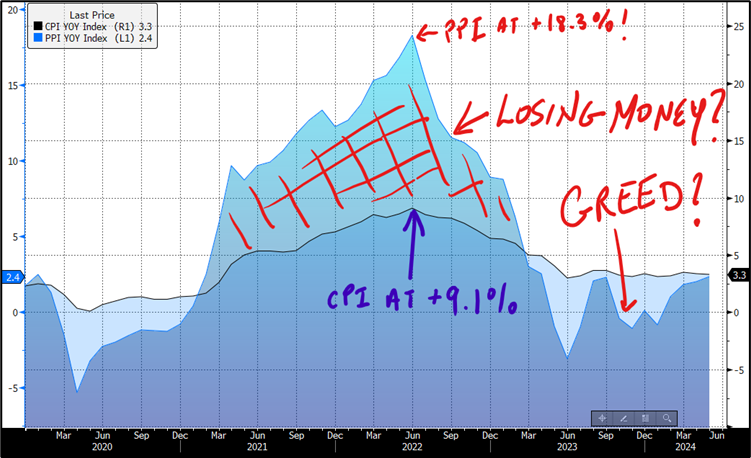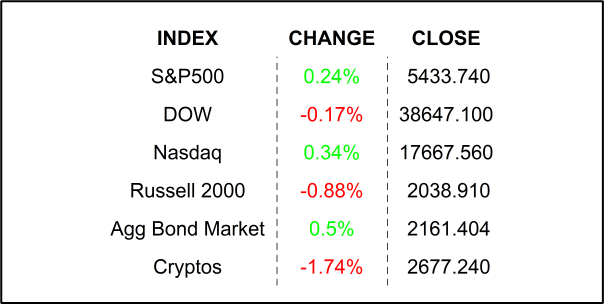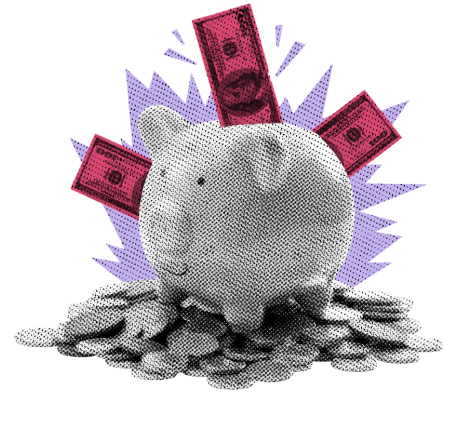
Stocks had a mixed close yesterday as investors were unsure what a good or a bad economic number looked like. Weekly new jobless claims jumped yesterday in another sign that the labor market is cooling down.
For lack of a better word. When you went to the grocery store last night, were you able to negotiate the price you paid for those free-range chicken eggs? How about that Greek yogurt that your daughter told you was good for your health? Of course, not. You scan the package, the price pops up, it gets added to your tab, and you pop it into your bag… or sack, if you’re from the south. My regular readers know how I love to refer to supply and demand, but let’s get real for a minute… er, 5 minutes. COMPANIES SET PRICES, not you.
I was speaking with a friend yesterday and he told me that he started seeing some political rhetoric about corporate greed causing inflation. As this is kind-of an investment note, let’s stay focused on companies themselves. What is the goal of a company? Or more directly put, when you invest in a company, what do you expect management to do with your money? Well, I hope you answered, “to maximize profit!” Remember my other friend who owns the Mediterranean food importing company. If his cost of a gallon of olive oil triples, what should he do? Well, if he is rational, he would raise prices to cover his cost increases. If he didn’t, he would likely be losing money. Would you want to invest in a company that is losing money? I suspect, not.
There are many things that can have a material impact on prices, as we have learned in the past 5 years. When it comes to food commodities, Mother Nature and crop yields are certainly factors. Those products need to be harvested and shipped. So, labor cost and shipping costs are factors as well. I know that I am oversimplifying it, but I am sure that you can see, even in our abstracted business model that the “things” that go into cost can be highly variable. In other words, they go up and down frequently. Because of this, companies do not typically adjust prices too often. In other words, most companies WILL, in fact, eat cost increases initially in order to smooth prices to consumers. Additionally, in certain sectors where there is high cross price elasticity, companies are highly reluctant to raise prices to avoid losing a customer to a cheaper substitute good. In most cases, prices normalize, and everyone ends up happy… mostly. HOWEVER, as I am sure that you will astutely point out, the pandemic was not a “most cases” event. It caused a supply shock, initially sending costs of goods through the roof. Typical companies responded as they have in the past by initially “eating” the increased costs hoping for quick normalization. But when costs did not normalize, but instead continued to increase, RATIONAL companies had no choice but to raise prices to consumers. Check out this chart on which I plotted the Consumer Price Index / CPI and the Producer Price Index / PPI. Have a look and then follow me to the finish.

I hope you immediately noticed that producers were facing +18% increases in 2022 while consumers were facing +9% inflation. Now, I am not going to argue that +9% inflation doesn’t suck as it certainly affected my household budget, but imagine if you were a company and your costs increased by nearly 1/5, and the Fed was raising your borrowing costs? Imagine if one of your long-term, safe delivery truck drivers quit to go to a competitor willing to pay more per hour? What would you do? Thankfully, that is not the end of our story.
As you can see on the right-hand side of the chart, producer price inflation came down in 2023 and it still remains lower than consumer price inflation. Not significantly lower, BUT LOW ENOUGH TO RECOVER FROM SOME OF THE PAIN HAD IN 2021 and 2022. You may not own your own business, but you are likely a stock investor in a business that faced similar challenges. As a shareholder, what would you have expected management to do in a scenario like this? **A quick sidenote on the chart: it is for illustration only, PPI is plotted on the left axis, which is on a different scale to CPI, which is plotted on the right-hand axis, however even if they were scaled similarly PPI eclipsed CPI. Additionally, those are not actual losses as we are talking about cost and price CHANGE, but it is important to note that producers’ costs were rising far quicker than consumers’ prices.
So, going back to my friend’s observation, is it correct to refer to a company that only raised prices to cover its cost increases as being greedy? Moreover, if that company was slow to increase prices to cover increases and now is attempting to recover deficiencies from the prior 2 years, can it be referred to as corporate greed? Remember, thinking as a shareholder, wouldn’t you want the companies you invest in to maximize profit by acting rationally? So, if rational, profit maximizing corporate behavior is greed, then I would have to vote in favor of Mr. Gecko, who said famously, “greed – for a lack of a better word – is good!”
YESTERDAY’S MARKETS

NEXT UP
- University of Michigan Sentiment (June) may have improved to 72.0 from May’s 69.1 print.
- University of Michigan 1-year Inflation Expectation (June) is expected to come in at +3.2% versus the prior period’s +3.3%.
- Next week we will get housing numbers, regional Fed reports, Retail Sales, and Leading Economic Index. Check back in on Monday for calendars and details.
- Follow us on Instagram ( https://www.instagram.com/siebertfinancial/ )to see daily video shorts by yours truly 😉 along with all sorts of other cool stuff.
.png)

